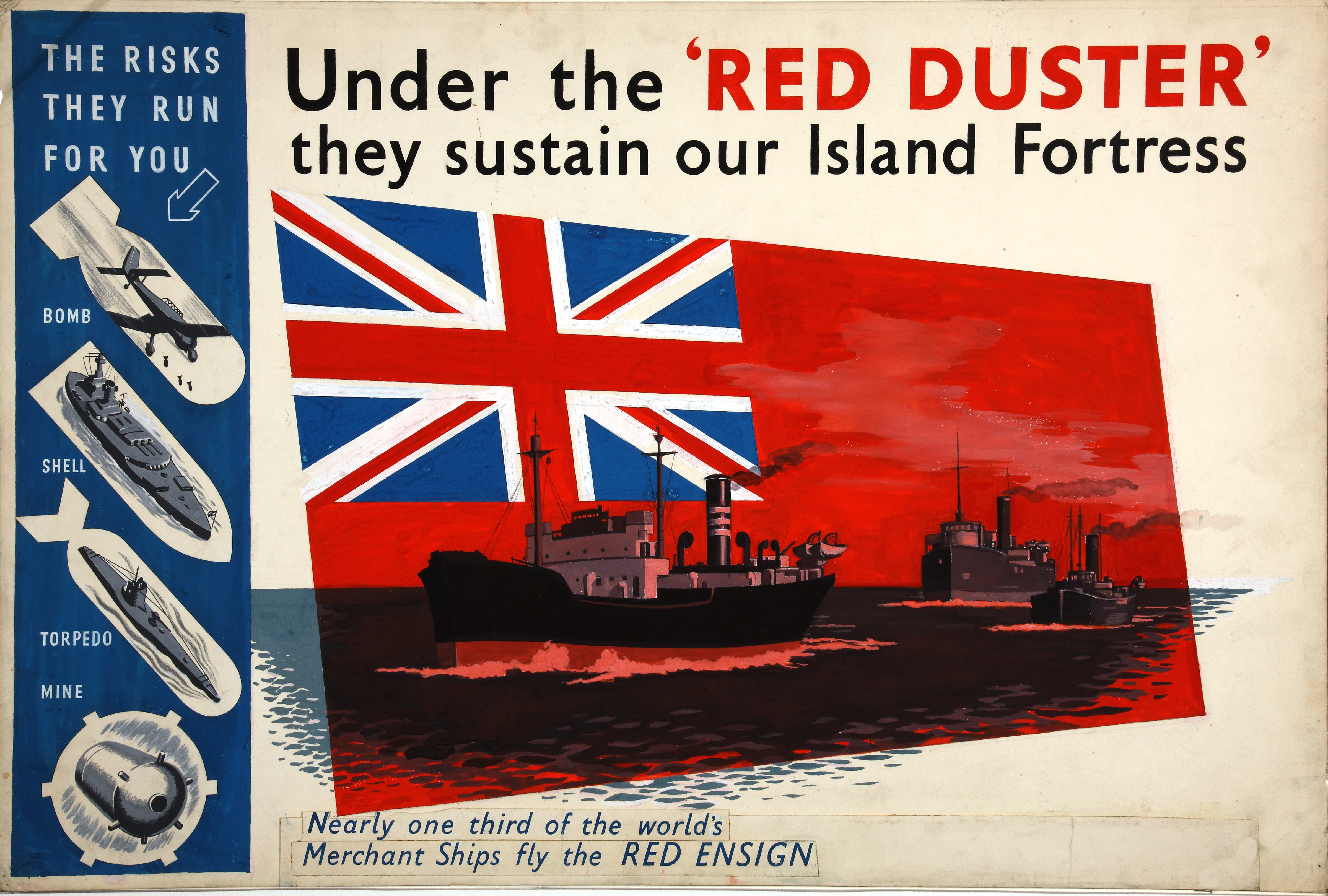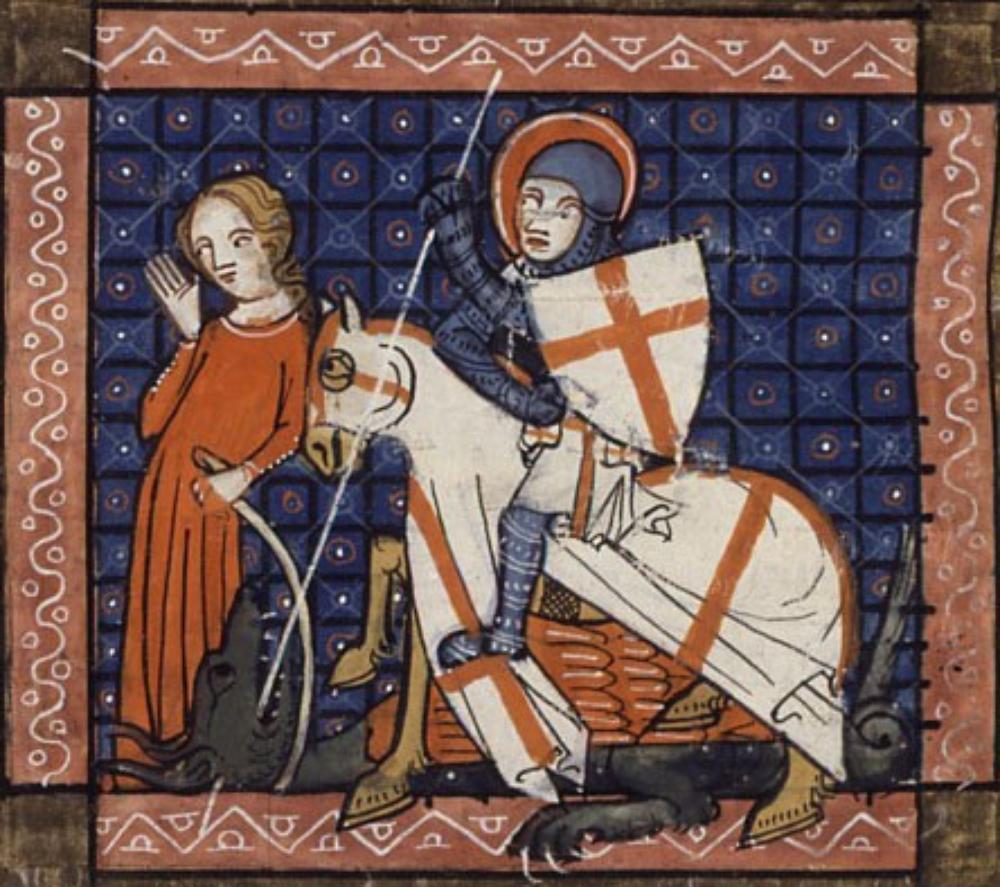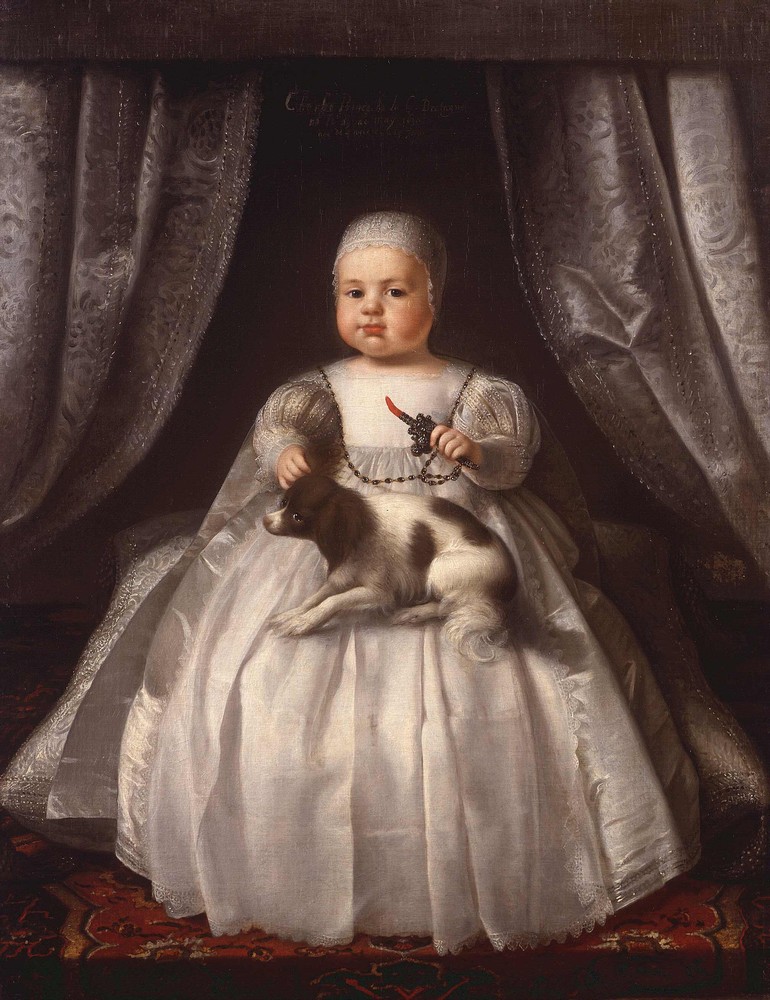|
Red Ensign
The Red Ensign or Red Duster is the civil ensign of the United Kingdom. It is one of the British ensigns, and it is used either plain or defacement (flag), defaced with either a Glossary of vexillology#Flag elements, badge or a Glossary of vexillology#Flag elements, charge, mostly in the right half. It is the flag flown by British merchant or passenger ships since 1707. Prior to 1707, an Kingdom of England, English red ensign and a Kingdom of Scotland, Scottish red ensign were flown by the History of the Royal Navy (before 1707), English Royal Navy and the Royal Scots Navy, respectively. The precise date of the first appearance of these earlier red ensigns is not known, but surviving payment receipts indicate that the English navy was paying to have such flags sewn in the 1620s. History England (pre-1707) Prior to the reorganisation of the Royal Navy in 1864, the plain red ensign had been the ensign of one of three squadrons of the Royal Navy, the Coloured squadrons of ... [...More Info...] [...Related Items...] OR: [Wikipedia] [Google] [Baidu] |
Royal Navy
The Royal Navy (RN) is the naval warfare force of the United Kingdom. It is a component of His Majesty's Naval Service, and its officers hold their commissions from the King of the United Kingdom, King. Although warships were used by Kingdom of England, English and Kingdom of Scotland, Scottish kings from the early Middle Ages, medieval period, the first major maritime engagements were fought in the Hundred Years' War against Kingdom of France, France. The modern Royal Navy traces its origins to the English Navy of the early 16th century; the oldest of the British Armed Forces, UK's armed services, it is consequently known as the Senior Service. From the early 18th century until the World War II, Second World War, it was the world's most powerful navy. The Royal Navy played a key part in establishing and defending the British Empire, and four Imperial fortress colonies and a string of imperial bases and coaling stations secured the Royal Navy's ability to assert naval superior ... [...More Info...] [...Related Items...] OR: [Wikipedia] [Google] [Baidu] |
Merchant Navy (United Kingdom)
The British Merchant Navy is the collective name given to British civilian ships and their associated crews, including officers and ratings. In the UK, it is simply referred to as the Merchant Navy or MN. Merchant Navy vessels fly the Red Ensign and the ships and crew are regulated by the Maritime and Coastguard Agency (MCA), a specialist agency of the UK Department of Transport. British merchant ships are registered under the UK or Red Ensign group ship registries. British Merchant Navy deck officers and ratings are certificated and trained according to STCW Convention and the syllabus of the Merchant Navy Training Board in maritime colleges and other training institutes around the UK. King George V bestowed the title of "Merchant Navy" on the British merchant shipping fleets following their service in the First World War; a number of other nations have since adopted the title. Previously it had been known as the Mercantile Marine or Merchant Service, although the term "Merchan ... [...More Info...] [...Related Items...] OR: [Wikipedia] [Google] [Baidu] |
Saint George's Cross
In heraldry, Saint George's Cross (or the Cross of Saint George) is a red cross on a white background, which from the Late Middle Ages became associated with Saint George, the military saint, often depicted as a crusader. Associated with the crusades, the red-on-white cross has its origins in the 10th century. It has been used as the ensign of the Republic of Genoa from perhaps as early as the 10th century. The symbol was adopted by the Swabian League in the pre-Reformation Holy Roman Empire. George became associated as patron saint of England in the fourteenth century, replacing St Edmund the Martyr. Since then this flag is commonly identified as the national flag of England. Saint George is the patron saint of Catalonia and of the country of Georgia. It figures in the coat of arms of Barcelona. The national flag of Georgia supplements this cross with Jerusalem crosses. Across the rest of Northern Italy as the symbol of Bologna, Genoa, Padua, Reggio Emilia, ... [...More Info...] [...Related Items...] OR: [Wikipedia] [Google] [Baidu] |
Jersey
Jersey ( ; ), officially the Bailiwick of Jersey, is an autonomous and self-governing island territory of the British Islands. Although as a British Crown Dependency it is not a sovereign state, it has its own distinguishing civil and government institutions, so qualifies as a small nation or island country. Located in Northwestern Europe, off the coast of north-west France, it is the largest of the Channel Islands and is from Normandy's Cotentin Peninsula. The Bailiwick consists of the main island of Jersey and some surrounding uninhabited islands and rocks including Les Dirouilles, Les Écréhous, Les Minquiers, and Les Pierres de Lecq. Jersey was part of the Duchy of Normandy, whose dukes became kings of England from 1066. After Normandy was lost by the kings of England in the 13th century, and the ducal title surrendered to France, Jersey remained loyal to the English Crown, though it never became part of the Kingdom of England. At the end of the Napoleonic ... [...More Info...] [...Related Items...] OR: [Wikipedia] [Google] [Baidu] |
Royal Naval Reserve
The Royal Naval Reserve (RNR) is one of the two volunteer reserve forces of the Royal Navy in the United Kingdom. Together with the Royal Marines Reserve, they form the Maritime Reserve. The present RNR was formed by merging the original Royal Naval Reserve, created in 1859, and the Royal Naval Volunteer Reserve (RNVR), created in 1903. The Royal Naval Reserve has seen action in World War I, World War II, the Iraq War and the War in Afghanistan. History Establishment The Royal Naval Reserve (RNR) has its origins in the Register of Seamen, established in 1835 to identify men for naval service in the event of war, although just 400 volunteered for duty in the Crimean War in 1854 out of 250,000 on the Register. This led to a Royal Commission on Manning the Navy in 1858 and 1859, which in turn led to the Naval Reserve Act 1859. This established the RNR as a reserve of professional seamen from the British Merchant Navy and fishing fleets, who could be called upon durin ... [...More Info...] [...Related Items...] OR: [Wikipedia] [Google] [Baidu] |
Flag Of Scotland
The flag of Scotland (; , also known as St Andrew's Cross or the Saltire) is the national flag of Scotland, which consists of a white saltire Defacement (flag), defacing a blue field. The Saltire, rather than the Royal Standard of Scotland, is the correct flag for all private individuals and corporate bodies to fly. It is also, where possible, flown from Scottish Government buildings every day from 8:00 am until sunset, with certain exceptions. Use of the flag is first recorded with the illustration of a heraldic flag in David Lyndsay, Sir David Lyndsay of the Mount's ''Register of Scottish Arms,'' . It is possible that this is based on a precedent of the late 15th century, the use of a white saltire in the canton of a blue flag reputedly made by Margaret of Denmark, Queen of Scotland, Queen Margaret, wife of James III of Scotland, James III (1451–1488). Design The heraldry, heraldic term for an X-shaped cross is a 'saltire', from the old French word or (itself derived ... [...More Info...] [...Related Items...] OR: [Wikipedia] [Google] [Baidu] |
Edward I Of England
Edward I (17/18 June 1239 – 7 July 1307), also known as Edward Longshanks and the Hammer of the Scots (Latin: Malleus Scotorum), was King of England from 1272 to 1307. Concurrently, he was Lord of Ireland, and from 1254 to 1306 ruled Duchy of Gascony, Gascony as Duke of Aquitaine in his capacity as a vassal of the French king. Before his accession to the throne, he was commonly referred to as the Lord Edward. The eldest son of Henry III of England, Henry III, Edward was involved from an early age in the political intrigues of his father's reign. In 1259, he briefly sided with a baronial reform movement, supporting the Provisions of Oxford. After reconciling with his father, he remained loyal throughout the subsequent armed conflict, known as the Second Barons' War. After the Battle of Lewes, Edward was held hostage by the rebellious barons, but escaped after a few months and defeated the baronial leader Simon de Montfort at the Battle of Evesham in 1 ... [...More Info...] [...Related Items...] OR: [Wikipedia] [Google] [Baidu] |
Stone Of Scone
The Stone of Scone (; , meaning Stone of Destiny, also called clach-na-cinneamhuinn; ) is an oblong block of red sandstone that was used in the coronation of Scottish monarchs until the 13th century, and thereafter in the coronation of English and later British monarchs. The Stone measures and weighs approximately . A cross is roughly incised on one surface, and an iron ring at each end aids with transport. Monarchs sat on the Stone of Scone itself, until a wooden platform was added to the Coronation Chair in the 17th century. The artefact was originally kept at the now-ruined Scone Abbey in Scone, near Perth. In 1296, the forces of Edward I of England captured it during Edward's invasion of Scotland. The Stone has subsequently been used in the coronation of English monarchs and British monarchs for over 500 years. In 1996, the stone was returned to Scotland, and kept in Edinburgh Castle with the Honours of Scotland. The stone remains property of the Crown and is t ... [...More Info...] [...Related Items...] OR: [Wikipedia] [Google] [Baidu] |
Scottish Red Ensign
Scottish usually refers to something of, from, or related to Scotland, including: *Scottish Gaelic, a Celtic Goidelic language of the Indo-European language family native to Scotland *Scottish English *Scottish national identity, the Scottish identity and common culture *Scottish people, a nation and ethnic group native to Scotland * Scots language, a West Germanic language spoken in lowland Scotland * Symphony No. 3 (Mendelssohn), a symphony by Felix Mendelssohn known as ''the Scottish'' See also *Scotch (other) *Scotland (other) *Scots (other) *Scottian (other) *Schottische The schottische is a partnered country dance that apparently originated in Bohemia. It was popular in Victorian-era ballrooms as a part of the Bohemian folk-dance craze and left its traces in folk music of countries such as Argentina (Spanish ... * {{disambiguation Language and nationality disambiguation pages ca:Escocès ... [...More Info...] [...Related Items...] OR: [Wikipedia] [Google] [Baidu] |
Charles II Of England
Charles II (29 May 1630 – 6 February 1685) was King of Scotland from 1649 until 1651 and King of England, Scotland, and King of Ireland, Ireland from the 1660 Restoration of the monarchy until his death in 1685. Charles II was the eldest surviving child of Charles I of England, Scotland and Ireland and Henrietta Maria of France. After Charles I's execution at Palace of Whitehall, Whitehall on 30 January 1649, at the climax of the English Civil War, the Parliament of Scotland proclaimed Charles II king on 5 February 1649. However, England entered the period known as the English Interregnum or the English Commonwealth with a republican government eventually led by Oliver Cromwell. Cromwell defeated Charles II at the Battle of Worcester on 3 September 1651, and Charles Escape of Charles II, fled to mainland Europe. Cromwell became Lord Protector of England, Scotland and Ireland. Charles spent the next nine years in exile in France, the Dutch Republic and the Spanish Netherlands. ... [...More Info...] [...Related Items...] OR: [Wikipedia] [Google] [Baidu] |
John Endecott
John Endecott (also spelled Endicott; 1588 – 15 March 1665), regarded as one of the Fathers of New England, was the longest-serving governor of the Massachusetts Bay Colony, which became the Massachusetts, Commonwealth of Massachusetts. He served a total of 16 years, including most of the last 15 years of his life. When not serving as governor, he was involved in other elected and appointed positions from 1628 to 1665 except for the single year of 1634. Endecott was a zealous and somewhat hotheaded Puritan, with Congregationalist polity, Separatist attitudes toward the Anglican Church. This sometimes put him at odds with Nonconformist (Protestantism), Nonconformist views that were dominant among the colony's early leaders, which became apparent when he gave shelter to the vocally Separatist Roger Williams. Endecott also argued that women should dress modestly and that men should keep their hair short, and issued judicial decisions banishing individuals who held religious view ... [...More Info...] [...Related Items...] OR: [Wikipedia] [Google] [Baidu] |





